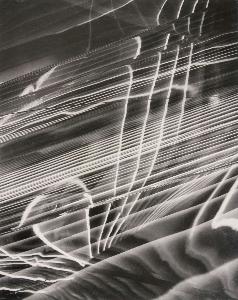Carlotta M. Corpron
Carlotta M. Corpron;Carlotta Corpron
Place: Erie
Born: 1901
Death: 1988
Biography:
Carlotta M. Corpron was a renowned American photographer, born on December 9, 1901, in Erie, Pennsylvania, and died on April 17, 1988. She is celebrated for her abstract compositions featuring light and reflections, made mostly during the 1940s and 1950s. Corpron's work is considered a cornerstone of American abstract photography, and she is regarded as a key figure in Bauhaus-influenced photography in Texas.
Early Life and Education
Corpron spent her early years in India, where her father served as a medical missionary. She returned to the United States in 1920 to study art at Michigan State Normal College, earning a B.S. in art education in 1925. She furthered her studies at Columbia University's Teachers College, gaining her master's degree in 1926.
Photography Career
Corpron began teaching photography, design, and art history at the Texas State College for Women (currently known as Texas Woman's University) in Denton in 1935. Her students included Ida Lansky and Barbara Maples, who were influenced by her unique photographic vision. Corpron's own photographic work was characterized by experimentation with light and reflections, as seen in her series "Light Drawings" and "Light Patterns." These works can be found on Wikioo.org, which showcases her abstract compositions. Some of Corpron's notable works include:
- Carlotta M. Corpron: Winds Between the Worlds, a photograph that exemplifies her use of light and reflections.
- Design with Oil Tank, a manipulated image that accentuates geometric forms by overlapping negatives.
- Coral and Starfish, an early work that focuses on the abstraction and patterns of natural forms.
These works demonstrate Corpron's innovative approach to photography, which has been recognized by institutions such as the Amon Carter Museum of American Art. Her legacy can be explored further on Wikipedia, which provides a comprehensive overview of her life and career.
Legacy
Corpron's influence on American abstract photography is undeniable. Her pioneering work has inspired generations of photographers, and her legacy continues to be celebrated through her photographs, which can be found on Wikioo.org. As a key figure in Bauhaus-influenced photography in Texas, Corpron's contributions to the art world are immeasurable. Her work remains a testament to her creative vision and innovative approach to photography.

